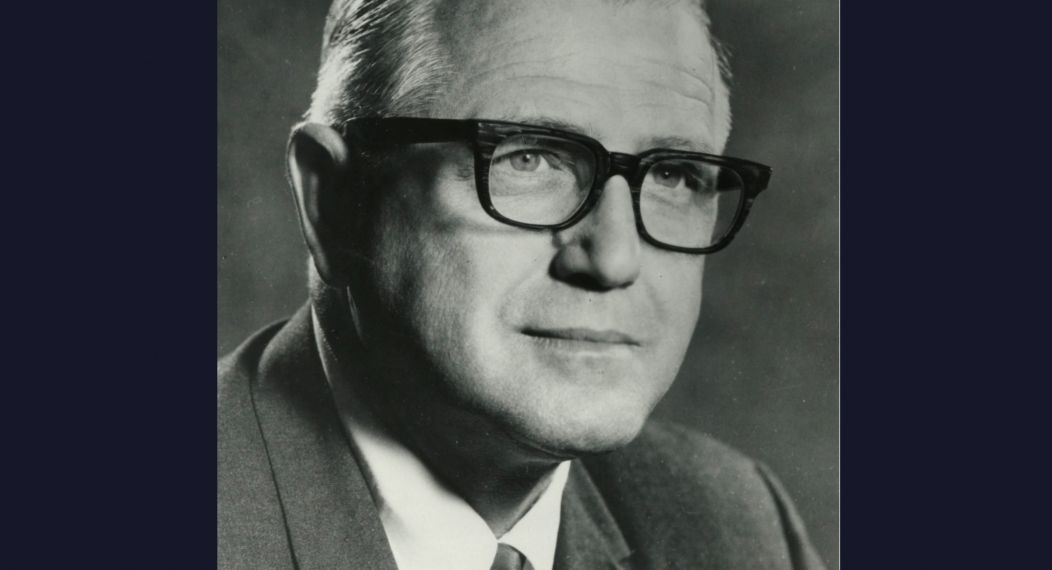Burns is widely regarded as the most transformative president in Pacific’s history.
Robert Burns devoted his career to Pacific. Immediately after graduating from Pacific with an undergraduate degree in Western American history in 1931, Burns started as Pacific’s alumni relations director. In 1942, then-president Tully C. Knoles recognized Burns’ potential and hired him as assistant to the president, a role which Knoles used to prepare Burns as his successor.
In his inaugural address, Burns famously said, “Pacific must pioneer or perish,” a sentiment he took to heart throughout his career. Starting from his appointment, Burns brought innovation to Pacific. He was the first Pacific president who was not a member of the Methodist clergy. Burns also held fewer degrees than previous presidents. He submitted his master’s thesis while in office. His thesis, “The First Half-Century of the College of the Pacific,” was the first written history of Pacific.
Burns is best known for his work to expand Pacific. During his presidency, enrollment grew from 900 students in 1947 to more 5,000 in 1972. Burns also extended the Pacific community, launching a reorganization of the Alumni Association in 1957.
A visionary who saw Pacific’s potential, Burns built up schools and programs that have become central to Pacific. In 1955, Burns founded the third pharmacy school in California with the support and financial backing of local pharmacists. Burns continued this work, opening engineering, dental and medical science schools within Pacific. Burns also negotiated the merger with the McGeorge School of Law in 1966.
Additional schools were opened to support international studies. Burns founded the Elbert Covell College, an inter-American studies program taught entirely in Spanish — the first college in the country to teach in a second language. The college gained nationwide recognition, with President John Kennedy sending Burns a letter congratulating him on the program. This success inspired Burns to open another international studies school, Callison College, in 1968, with an emphasis on study abroad programs in Asia.
Burns also acted in support of student initiatives. After a protest by student leaders, Burns negotiated with the students and faculty to create the Community Involvement Program for students from Stockton. More than 130 faculty members immediately volunteered to help with tutoring initiatives for the program. The program continues today at Pacific, and its founding marked the start of Pacific’s transition away from a white, Methodist school to a diverse university.
To support Pacific’s rapidly expanding academic offerings, Burns also supplemented Pacific’s infrastructure. He oversaw the construction of Pacific’s first dedicated library building, the Martin Library, in 1955. The formation of a dental program also necessitated expansion into San Francisco, with the purchase of the building that became the Pacific dental school in 1967. Above all, Burns is remembered for Burns Tower, a symbol of both Pacific and the Stockton area, that was the tallest building in Stockton when it was built.
Burns’ ideas and belief in Pacific guided the university beyond his retirement. His hopes to purchase the Stockton College campus were realized under President McCaffrey. Burns’ dedication to close connections between students and faculty and practice-guided graduate programs remain pillars of a Pacific education, just as Burns Tower continues as a symbol of Pacific.
Burns died in 1971.




